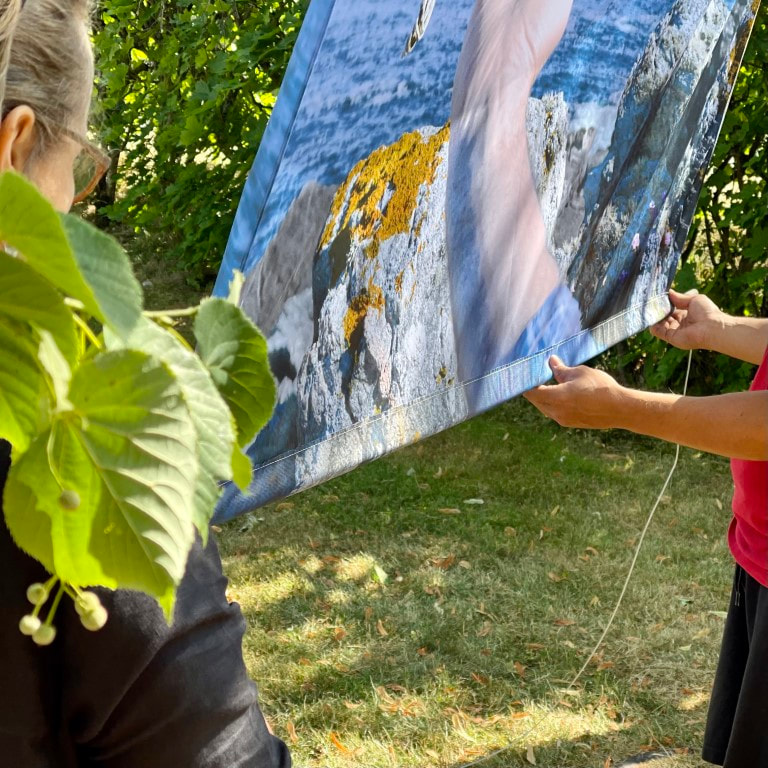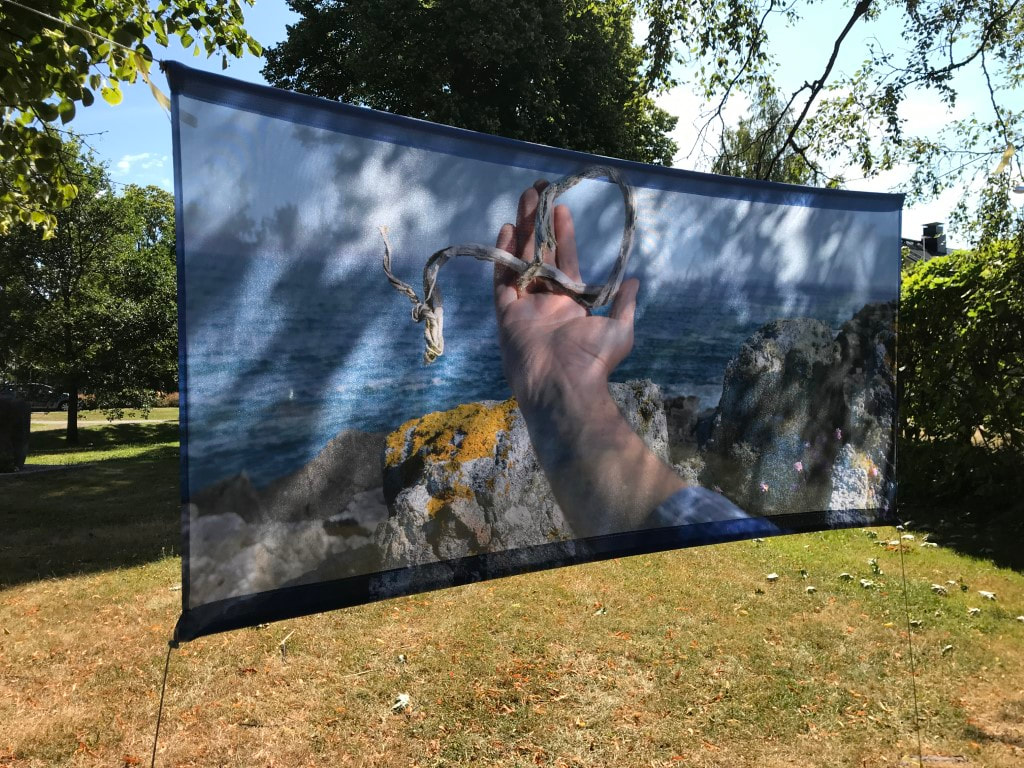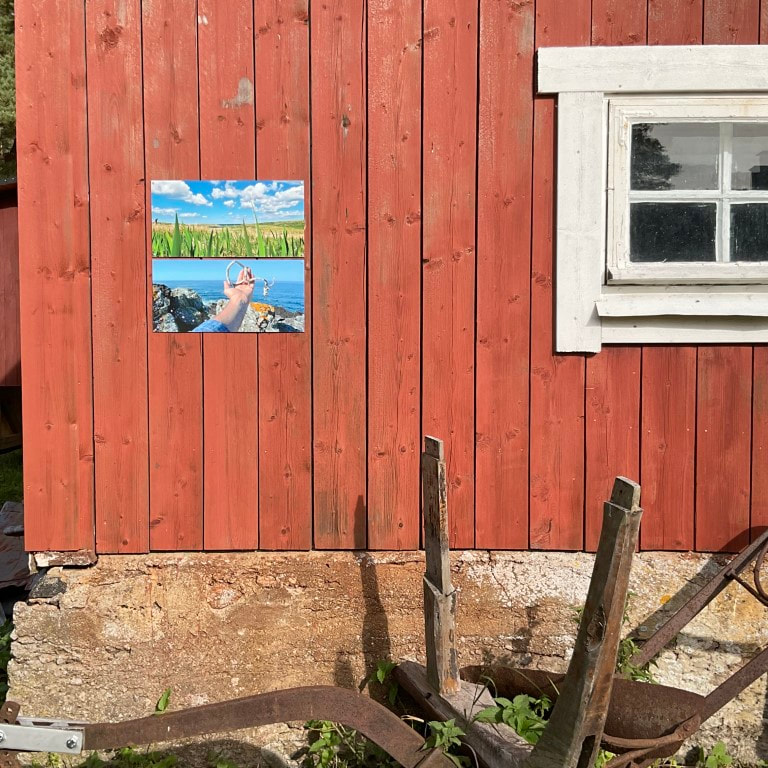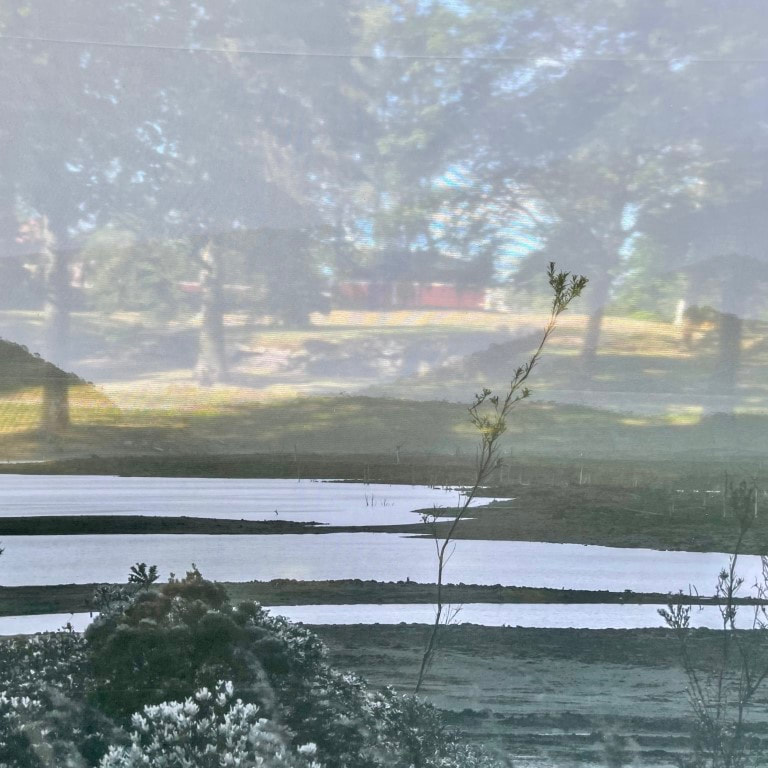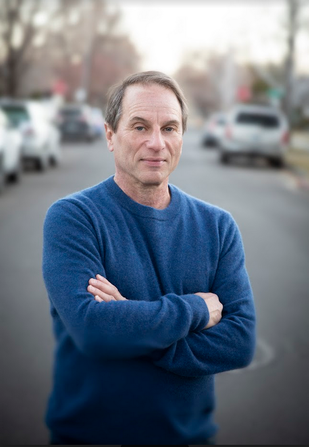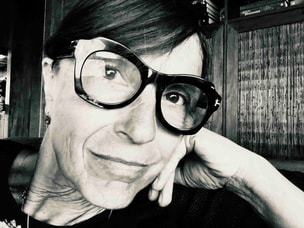COMMITMENT TO THE PLACE
|
ANDY FREEBERG
|
JEANETTE SCHÄRING is internationally active and deeply rooted in an ecological and holistic way of thinking. Her artistic research is often in relation to the place and its communities and about our sensitive ecosystem. She works place specific with the environment and the community around water and plants and colour, empowering and connecting people. In her work, she is highlighting the aesthetic and our communication between human and non-human. She uses fiber, textile, water, plant-materials, performance and photography.
She has worked in many different transdisciplinary collaborations and projects. She has participated in various conferences and artist residencies around the world: Madagascar, India, Laos, Indonesia and Malaysia. In New Zealand she studied craft art, and health and medicinal plants with indigenous Maori. She has written joint articles and published a book
Her work focuses on artistic research of colour from plants relating to water and light. The colours from plants connect us as humans through perception, life course, wisdom and health.
She has worked in many different transdisciplinary collaborations and projects. She has participated in various conferences and artist residencies around the world: Madagascar, India, Laos, Indonesia and Malaysia. In New Zealand she studied craft art, and health and medicinal plants with indigenous Maori. She has written joint articles and published a book
Her work focuses on artistic research of colour from plants relating to water and light. The colours from plants connect us as humans through perception, life course, wisdom and health.
|
|
Artists tell about their work /
Opening @ Rauma and Zoom 25.6.2021 |
ANDY FREEBERG: THE CURONIAN SPIT, 2016
Some of my ancestors lived in Lithuania until the late 19th century, before they emigrated to the United States. In 2016 I visited this beach on the Baltic Sea near Klaipėda.
I drove down with my Finnish wife, via the ferry from Helsinki. On that cloudless day I was imagining my great-great-grandfather walking and swimming in that same place on the Curonian Spit, which was part of Russia and Germany at the time he was living there. It probably wasn’t a nude beach then.
Growing up in America I almost never heard this history of my family and it’s only recently, now that I’m spending part of the year living in Finland, I’ve become more interested in discovering these roots.
I drove down with my Finnish wife, via the ferry from Helsinki. On that cloudless day I was imagining my great-great-grandfather walking and swimming in that same place on the Curonian Spit, which was part of Russia and Germany at the time he was living there. It probably wasn’t a nude beach then.
Growing up in America I almost never heard this history of my family and it’s only recently, now that I’m spending part of the year living in Finland, I’ve become more interested in discovering these roots.
JEANETTE SCHÄRING:
CECILIA VIGNOLO: THE "RIO DE LA PLATA" RIVER
Uruguay is the name of my country and also is the name of one of the two rivers that form the Río de la Plata (the river of the silver) on whose shores is the city of Montevideo, my city, the southest capital of the world.
The river is so open that it is actually a estuary, sometimes more sweet, others more salty, depending on the tides, as in my life, maybe because I was born in front of it, and I lived there for some years. My actual home is 1.4 km from there and I go there very often because it is the closest contact I can have with something natural. In this river I had spread the ashes of my loved dead ones: my grandmother Dorita, my grandfather Elbio, my grand uncle Eliana in 1996, 1997 and 2000. The ashes of my husband are in the roots of a tree in front of the river also, in the Cerro, on the other side of the Montevideo bay.
In this river I asked for protection to be able to give birth to my daughter, Sara, the day of Yemanyá, the queen of the water, who we tribute every february 2nd. In this river I have felt inspired for my political work, because during the dictatorial process (1973-1985) in a military operation named "Cóndor", people were thrown from planes into the water, and their bodys still somehow there, in the bottom, with "shoes of cement", at least in our collective conscience.
In this river I swim twice a week to rebuild my back after a not very lucky surgery, in order to be able to live and work without pain, in a desired future. The river gives me hope. My trainer is very disappointed with my performance because I swim very slowly, because he is not aware that for me is a major success to be there in contact with the elements, feeling the power of the earth with her gravity, the power of the water making me floating, the power of the air in my lungs, and the fire of my heart beating in the cold water. I am there inside the river somehow doing water Tai Chi, slowly, and I love it. I have no hurry, I have no were to go.
In this river, I have fear, because last week a man was killed and cutted in pieces and for days has been found the body, one leg and one arm, the head, one arm, and finally the last leg.
In this river, I live, I meditate, I love, I pray, I cry, I relax, I enjoy. In this river my ashes are going to be spread by my daughter.
Is the sweetest and saltiest of my life.
The river is so open that it is actually a estuary, sometimes more sweet, others more salty, depending on the tides, as in my life, maybe because I was born in front of it, and I lived there for some years. My actual home is 1.4 km from there and I go there very often because it is the closest contact I can have with something natural. In this river I had spread the ashes of my loved dead ones: my grandmother Dorita, my grandfather Elbio, my grand uncle Eliana in 1996, 1997 and 2000. The ashes of my husband are in the roots of a tree in front of the river also, in the Cerro, on the other side of the Montevideo bay.
In this river I asked for protection to be able to give birth to my daughter, Sara, the day of Yemanyá, the queen of the water, who we tribute every february 2nd. In this river I have felt inspired for my political work, because during the dictatorial process (1973-1985) in a military operation named "Cóndor", people were thrown from planes into the water, and their bodys still somehow there, in the bottom, with "shoes of cement", at least in our collective conscience.
In this river I swim twice a week to rebuild my back after a not very lucky surgery, in order to be able to live and work without pain, in a desired future. The river gives me hope. My trainer is very disappointed with my performance because I swim very slowly, because he is not aware that for me is a major success to be there in contact with the elements, feeling the power of the earth with her gravity, the power of the water making me floating, the power of the air in my lungs, and the fire of my heart beating in the cold water. I am there inside the river somehow doing water Tai Chi, slowly, and I love it. I have no hurry, I have no were to go.
In this river, I have fear, because last week a man was killed and cutted in pieces and for days has been found the body, one leg and one arm, the head, one arm, and finally the last leg.
In this river, I live, I meditate, I love, I pray, I cry, I relax, I enjoy. In this river my ashes are going to be spread by my daughter.
Is the sweetest and saltiest of my life.
BRUNA STUDE: ACCEPTANCE
I spent most of my life at sea, living on a boat. When we dropped anchor to build our home on Kaua`i, Hawai`i, I quietly mourned the loss of my freedom. I missed the sound of water lapping against the hull, the never-ending horizon extending into the distance, and the sky defining my seemingly boundaryless life.
A short sail out into the Pacific Ocean took me to Lehua Rock. It became my way to escape my new life and return for a moment to what I had left behind—sunlight disappearing into an endless depth, a familiar-feeling mystery and wonder.
As I looked up from below the surface, the sunlit rock had taken liquid form, terra firma rediscovered. Acceptance.
A short sail out into the Pacific Ocean took me to Lehua Rock. It became my way to escape my new life and return for a moment to what I had left behind—sunlight disappearing into an endless depth, a familiar-feeling mystery and wonder.
As I looked up from below the surface, the sunlit rock had taken liquid form, terra firma rediscovered. Acceptance.
SALOMÉ-CHARLOTTE CAMORS: THE LAKE
We are in Yaté, customary area of Djubea-Kapone, lands of kanak’s tribe, where the ground, full of metal, is redder than the sun himself. We are in New-Caledonia, gifted and doomed by Nickel.
Seventy-two years ago, there was only a river here. A river and lands. But the growing nickel industry was craving for energy and a hydroelectric dam was built to feed the blast furnaces of the pyrometallurgical factory SLN. Then, the Yat river turned into the biggest lake of the country, forty square meter of drowned forest and dead woods.
Nature was, as often, stronger than we can possibly imagine and the lands surrounding the lake became a luxurious park, now protected area, shelter of many endemic species such as the iconic cagou.
This could have been a nice story if humans were more inclined to learn from their mistake and less inclined to exercise domination. But due to unreasonable human activities, this ecosystem stay increasingly threatened, impacting both nature and kanak’s social fabric.
This place is for me a symbol. A symbol of the struggle between deleterious and regenerative strength, between environmental activist and unscrupulous investor, but overall a symbol of our incredible responsibility. As far as can be New-Caledonia, it will never be far enough to escape all the consequences of our overconsumption. As the mist over the mountain, our future seems so blurry, but I still hope that we will have the heart to become the wind of change that will broke the domination patterns over the living.
Seventy-two years ago, there was only a river here. A river and lands. But the growing nickel industry was craving for energy and a hydroelectric dam was built to feed the blast furnaces of the pyrometallurgical factory SLN. Then, the Yat river turned into the biggest lake of the country, forty square meter of drowned forest and dead woods.
Nature was, as often, stronger than we can possibly imagine and the lands surrounding the lake became a luxurious park, now protected area, shelter of many endemic species such as the iconic cagou.
This could have been a nice story if humans were more inclined to learn from their mistake and less inclined to exercise domination. But due to unreasonable human activities, this ecosystem stay increasingly threatened, impacting both nature and kanak’s social fabric.
This place is for me a symbol. A symbol of the struggle between deleterious and regenerative strength, between environmental activist and unscrupulous investor, but overall a symbol of our incredible responsibility. As far as can be New-Caledonia, it will never be far enough to escape all the consequences of our overconsumption. As the mist over the mountain, our future seems so blurry, but I still hope that we will have the heart to become the wind of change that will broke the domination patterns over the living.
JON MACLEOD: FROM LAG A BHOGAN TO GEO AN SHEOMA
There is a running narrative of names walking through the landscape from my house down to the sea – these are oral Gaelic names known in my village but not down on any standard map. These names are as handy as street signs for describing where you have been and where you want to go. Some have stories attached to them, with others the meaning is lost, and you can speculate on what they refer to and create your own fictions.
Starting at my house I pass Lag a’ Bhocan (the hollow of the ghost), Creagan Buidhe (the yellow hillocks) Eilean Ard na Reimh (the high island of the oars) and An Daim (The dam). Nearing my destination along the clifftop I pass Geo an Sheoma (the rocky inlet of the room – where the sea has carved out a space big enough for a family to sit down to supper).
There is also a running narrative of plants as I walk through the croft to the sea, starting with Cuckoo Flower (Cardamine pratensis) and slowly progressing with Butterwort (Pinguicula vulgaris) and Bog violet (Viola lanceolata), until on the cliff top above the sea I am in amongst Maritime Sunburst Lichen (Xanthoria parietina) and Sea Pink (Armeria maritima) – I clutch a dried kelp stalk as I walk to the edge of the cliff and the cusp of ocean
Beyond the cliffs another form of naming takes place. ‘Sea marks’, mnemonics describing fishing grounds, but also a plethora of names to describe the sea in all its variety exist, such as Strùplaidh (The backwash of sea on the shore usually during Northerly gales or heavy seas)’or Saobh-shruth (whirling contrary eddies).
Words are important here, instead of distancing you from nature they bond us deeper to it.
Starting at my house I pass Lag a’ Bhocan (the hollow of the ghost), Creagan Buidhe (the yellow hillocks) Eilean Ard na Reimh (the high island of the oars) and An Daim (The dam). Nearing my destination along the clifftop I pass Geo an Sheoma (the rocky inlet of the room – where the sea has carved out a space big enough for a family to sit down to supper).
There is also a running narrative of plants as I walk through the croft to the sea, starting with Cuckoo Flower (Cardamine pratensis) and slowly progressing with Butterwort (Pinguicula vulgaris) and Bog violet (Viola lanceolata), until on the cliff top above the sea I am in amongst Maritime Sunburst Lichen (Xanthoria parietina) and Sea Pink (Armeria maritima) – I clutch a dried kelp stalk as I walk to the edge of the cliff and the cusp of ocean
Beyond the cliffs another form of naming takes place. ‘Sea marks’, mnemonics describing fishing grounds, but also a plethora of names to describe the sea in all its variety exist, such as Strùplaidh (The backwash of sea on the shore usually during Northerly gales or heavy seas)’or Saobh-shruth (whirling contrary eddies).
Words are important here, instead of distancing you from nature they bond us deeper to it.
THE UNSURVEYED AREA ARTISTS 2022
|
ANDY FREEBERG began his career as a photojournalist and magazine photographer in New York City. He now devotes his time to his own fine art projects, which have been produced as books and exhibited as prints.
He currently has an exhibition through the summer of 2022 at the Serlachius Museum in Mänttä, Finland titled Where Art Thou. Freeberg’s work is in many public and private collections, including the Museum of Fine Arts Boston and the San Francisco Museum of Modern Art. His photographs have been featured in publications such as The New York Times, Le Monde, and The Guardian. He lives most of the year in Northern California and part of the year in Helsinki. |
|
JEANETTE SCHÄRING is internationally active and deeply rooted in an ecological and holistic way of thinking. Her artistic research is often in relation to the place and its communities and about our sensitive ecosystem. She works place specific with the environment and the community around water and plants and colour, empowering and connecting people. In her work, she is highlighting the aesthetic and our communication between human and non-human. She uses fiber, textile, water, plant-materials, performance and photography.
She has worked in many different transdisciplinary collaborations and projects. She has participated in various conferences and artist residencies around the world: Madagascar, India, Laos, Indonesia and Malaysia. In New Zealand she studied craft art, and health and medicinal plants with indigenous Maori. She has written joint articles and published a book Her work focuses on artistic research of colour from plants relating to water and light. The colours from plants connect us as humans through perception, life course, wisdom and health. |
|
CECILIA VIGNOLO was born in Montevideo in 1971.
Graduated in Communication Sciences, she has a Postgraduate in Artistic Education. Unpublished writer. She has been producing in an attempt to reflect on her body (public and private / political and cultural) for 30 years: installations, performances, site specific, urban interventions, artist books, texts, videos, collages. and mixed media. She performs performances that last 35 years (“Life is an ebb and flow” 2006-2041), a work with which a woman won for the first time the Grand Prize of the National Salon of Visual Arts, the first woman to win it in the country and the first performance to integrate a national heritage. Her work has been exhibited in Argentina, Brazil, Ecuador, USA, Spain, France, Sweden, Switzerland and Paraguay. It integrates public (MNAV) and private collections in Uruguay, Paraguay and Argentina. She has represented Uruguay in International Biennials (Porto Alegre, Pontevedra and Quito). She has made 10 individual exhibitions and has participated in more than 80 collective exhibitions and salons. |
|
BRUNA STUDE is a self-taught contemporary artist best known for her large black-and-white ocean photographs and platinum/palladium prints, initially of marine life and later of the ocean deprived of marine species.
Picturing the ocean as essentially abstract and communicating it through a series of movements she epitomizes water as the lens “sees it”. The resulting imagery is riffing on a brushstroke, as Stude demands from her camera to immortalize the moment and the movement - at times resulting in a cursive character-like line found both in the work of a calligrapher or a random doodle. |
Stude has exhibited in Hawaii, nationally and internationally. Her work is included in the collections of Hawai`i State Foundation for Culture and the Arts and Honolulu Museum of Art in Honolulu, Hawai`i, Bibliothèque Nationale de France in Paris, and Czong Institute for Contemporary Art, Czong, South Korea
Croatian-born, Stude lives on the island of Kauai`i, Hawai`i, of where she maintains a photographic/print studio.
www.brunastude.com
Croatian-born, Stude lives on the island of Kauai`i, Hawai`i, of where she maintains a photographic/print studio.
www.brunastude.com
|
SALOMÉ-CHARLOTTE CAMORS "My work takes its inspiration from humanity’s seemingly fatal fascination with the quest for ephemeral happiness, as promised by the consumer society, by way of refuge from the existential social and ecological crises that increasingly threaten our planet.
In this context, it is paradoxical that the massive diffusion of images highlighting and raising awareness regarding such pressing global threats should have failed to induce proportionate changes to our habits and behaviour. Indeed, while we live in a world literally saturated with photographs – whether they be aesthetic objects or vectors of meaning - our relationship with images remains far from simple and has become a key preoccupation for many leading philosophers and visual artists. In this vein, my work adopts an activist, research-oriented approach in order to go beyond images with a determination to engage and empower actual positive action on behalf of the environment." www.sc-camors.com |
|
JON MACLEOD is a multi-disciplinary artist, writer and curator based in the Isle of Lewis, Outer Hebrides.
His work explores human entanglements with nature, cultural identity and symbiotic sustainabilities. Recently he has recently taken part in exchanges and residencies in Norway, Finland, Newfoundland and Senegal. He is project curator and residency programmer for the arts organisation An Lanntair. www.lanntair.com https://resartis.org/listings/an-lanntair/ jonmactobaidh@msn.com jon@anlanntair.com |






